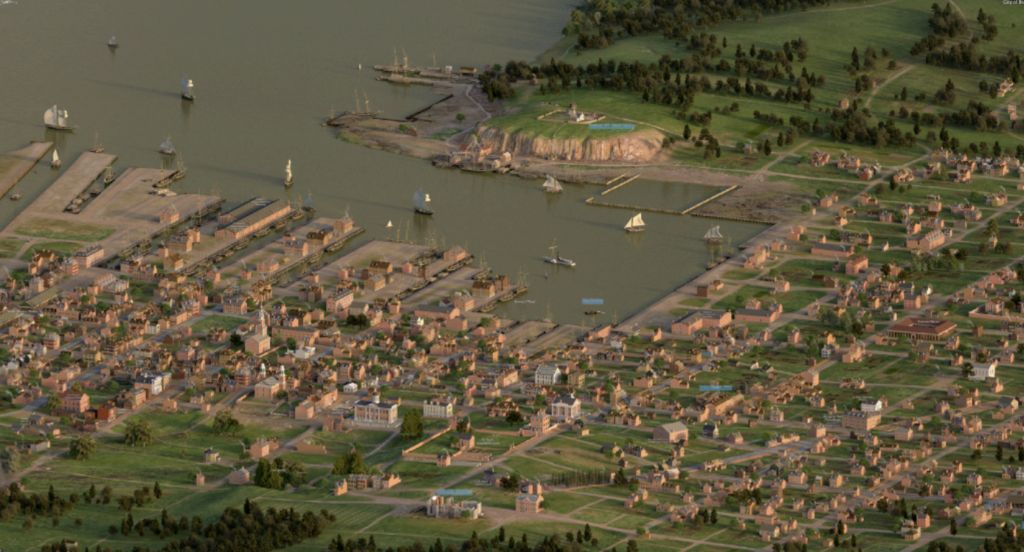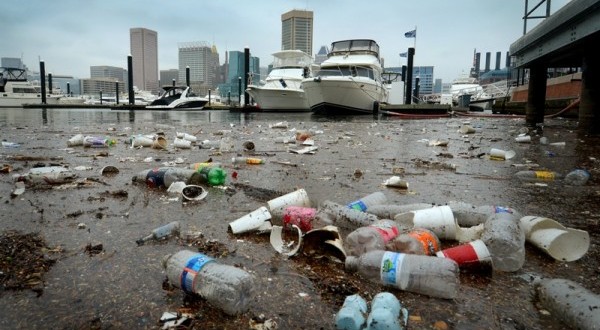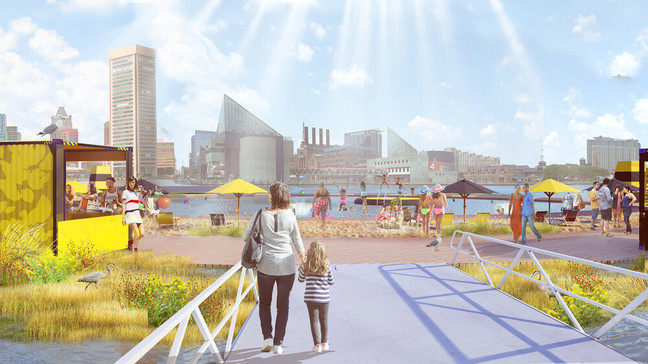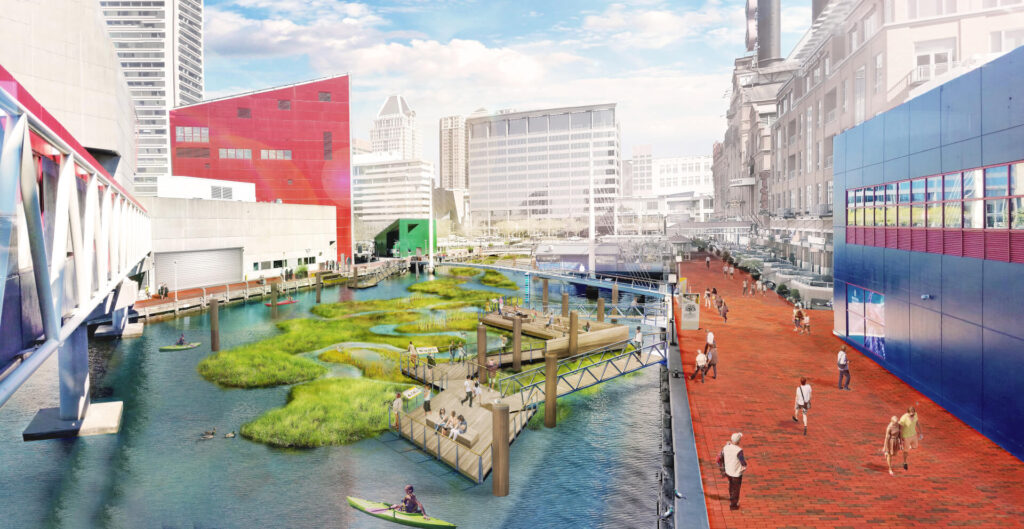By Karenna Laufer
Baltimore was first developed as a trade center with the harbor serving as a major port. Founded in 1729, the city’s location is uniquely nestled alongside a vast wheat growing countryside, closer to rich farmland than Philadelphia. With increasing industrial opportunity, immigrants flocked to Baltimore, entering through the harbor and scrambling for housing in the city center. The harbor has always played a key role in the city’s economy as well as civilian’s lives.

Today, the city looks much different. While much of Baltimore faces poverty levels and battles gentrification, the harbor is also incredibly polluted. In the early 19th century, the tidal marshes were dredged out and replaced with deep-water shipping ports, aquatic life removed (Shwe). By the mid-20th century, “much of [Baltimore] was set for demolition” as most of the city was “viewed by city leadership as a waterfront slum…deemed better to pave than preserve” (Cassie). Growing up, I was told stories of dolphins that could be seen swimming in the harbor hundreds of years ago. Currently however, the water is nearly opaque. It is illegal to swim in the water due to high pollutant levels; Baltimoreans risk chemical burns if they enter. Physical trash can be seen sitting on the water’s surface. While several initiatives have been implemented and promises made, bacteria levels remain high. The major pollutant in the water run-off and sewage leaks from wastewater treatment plants (Wheeler).

With the harbor failing to be the attraction it could be, the waterway is largely only used for industrial purposes. The area does not serve as the gathering place it has the potential to be. Much of the waterfront areas consist of large factories including the massive Under Armour factory and headquarters. Furthermore, the city’s waterfront property not being used as factory space is becoming vacant: “With the two Harborplace buildings at the heart of the tourist waterfront more than 90% vacant, there is little for visitors to do but enjoy the view and keep on walking” (Shen).
However, this area has so much more potential. The harbor could serve as a community gathering place, hosting an assortment of recreational water activities such as kayaking, fishing, and even swimming. Architects push to put the water at the forefront of the city, making harbor-side buildings “architecturally transparent” to showcase the natural beauty of the environment (Swift). While some urban planners advocate for increasing waterfront retail and communal buildings, other advocate for tearing down and not rebuilding. With an issue in vacancy of downtown complexes, a solution could be the transformation of the Inner Harbor into a beach. Nothing drives communal gathering like a beach. This proposal could jumpstart rapid initiatives to clean the harbor all around benefitting the community and environment.

Currently, the National Aquarium, which ironically sits adjacent to the polluted harbor, has proposed the re-creation of original tidal marshes by building an oasis of floating wetlands open to the public. They have already taken steps towards this vision launching a pilot project. This would act as a “low-tech green infrastructure” used to clean air and water (Shwe) . The National Aquarium plans to expand its current pilot project to a network of floating wetlands with piers connecting for visitors to traverse.

With more initiatives leading to increasing awareness about the harbor, many are hoping to motivate people to be more conscious of the harbor pollution. The harbor has the opportunity to be the center of the community, the living room of the city, yet it is not being showcased to its full potential. Gradually, some change has been implemented as Baltimore begins to see progress in water pollution levels. New urban planning designs appear to be sparking these cleaning initiatives, as Baltimoreans begin to see the potential for the communal living a clean harbor would provide, benefiting both city dwellers and the environment simultaneously.
Works Cited
Cassie, Ron. “The Gritty History (and Gentrification) of Fells Point.” Baltimore Magazine, 10 July 2023, www.baltimoremagazine.com/section/historypolitics/fells-point-baltimore-250-year-history-grit-gentrification/.
Shen, Fern. “Harborplace Now: Empty Shops, Locked Doors and a Fabulous View.” Baltimore Brew, 20 Apr. 2023, www.baltimorebrew.com/2023/04/20/harborplace-now-empty-shops-locked-doors-and-a-fabulous-view/.
Shwe, Elizabeth. “Floating Wetlands Planned for Inner Harbor to Revive Urban Ecosystems, Clean Water.” Maryland Matters, 16 Jan. 2022, www.marylandmatters.org/2021/09/09/floating-wetlands-planned-for-inner-harbor-to-revive-urban-ecosystems-clean-water/.
Swift, Tim. “Extreme Makeover Inner Harbor Edition: Five Ways to Reimagine Harborplace.” WBFF, 9 Apr. 2022, foxbaltimore.com/news/local/five-ways-to-reimagine-harborplace-extreme-makeover-inner-harbor-david-bramble.
Wheeler, Timothy B., and Dave Harp. “Swimming and Fishing Safely in the Baltimore Harbor? Not so Fast.” Bay Journal, 25 Sept. 2020, www.bayjournal.com/news/pollution/swimming-and-fishing-safely-in-the-baltimore-harbor-not-so-fast/article_920826c8-ff67-11ea-a31b-830821c9cb4f.html.

Hi Karenna,
I really liked this piece. I really enjoyed reading about the connection between pollution and segregation — it seems so clearly to be a huge environmental justice problem. It seems like the harbor has a lot of potential to bring a lot to Baltimore, so I hope that some changes can be made in the future — so that city dwellers and the environment can both benefit.